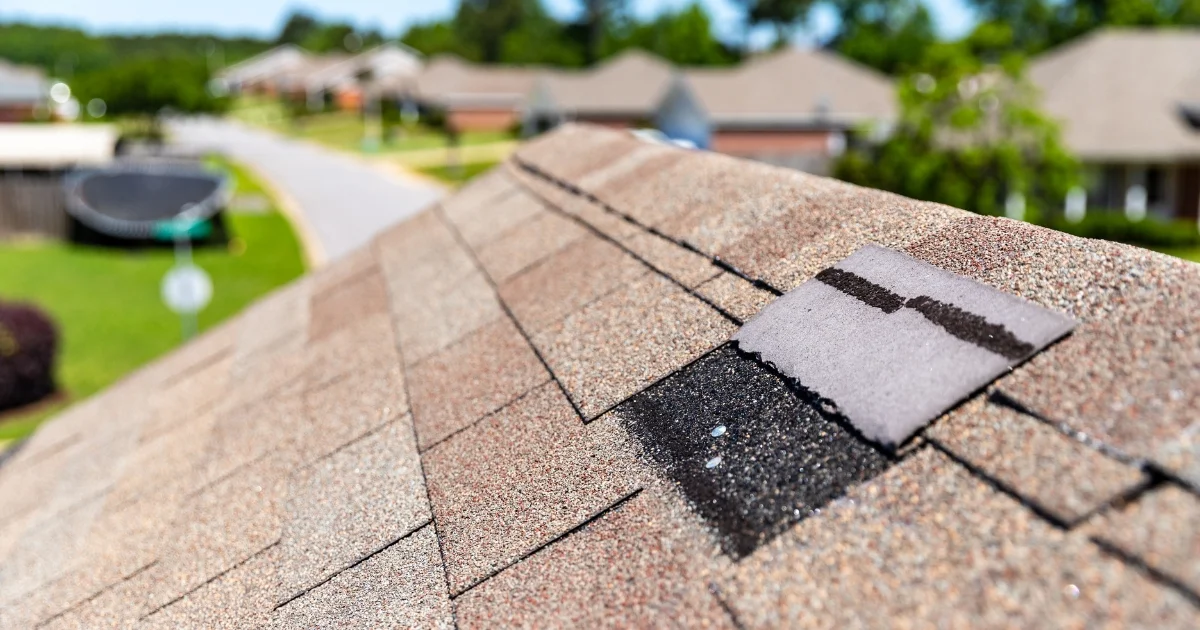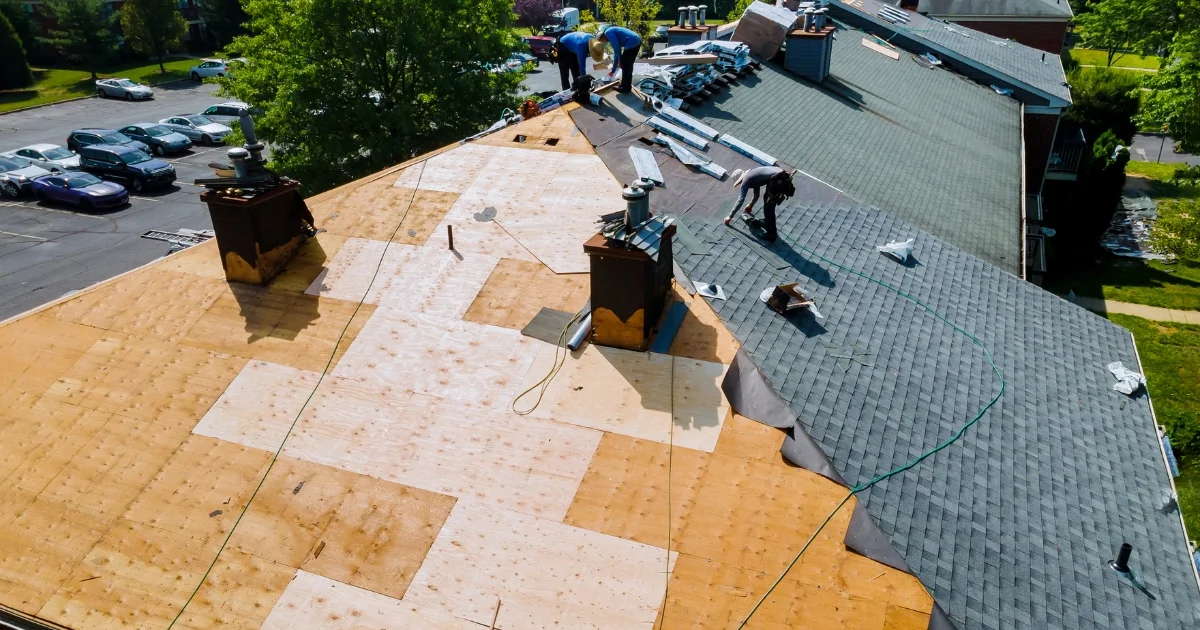
That strange clicking sound from the roof during windy days might signal more than normal house noises. Roof tile lifting often goes unnoticed until it creates visible problems or interior damage. Unlike obvious issues such as clogged gutters or peeling paint, lifted tiles can hide their effects until water finds its way inside.
Roof maintenance professionals recommend regular inspections because problems caught early typically cost less to repair. When tiles lift from their proper position, they create potential entry points for moisture and reduce the overall protection your roofing system provides. Even small gaps between tiles can allow wind-driven rain to penetrate the underlayment, potentially leading to more significant issues over time.
The security of your roof depends on those seemingly simple tiles staying exactly where they belong. Let's explore the common factors that cause roof tiles to lift and the practical solutions that keep them firmly in place for years to come.
Why Do Roof Tiles Lift? Understanding the Root Causes
The Powerful Force of Wind Uplift
Fierce winds create a vacuum effect that literally pulls tiles upward from their secure position. Think of it like holding your hand out of a car window. Air flows over and under your palm, creating lift. The same principle applies to roof tiles.
During particularly severe weather events, wind speeds can reach levels that overcome the weight and fastening systems holding tiles in place. This problem becomes especially concerning for homes in coastal areas or regions prone to high winds and storms.
Have you noticed the corners of your roof showing the first signs of tile lifting? That's because these areas experience the strongest wind forces and are often the first to show damage.
Weather-Related Expansion and Contraction
Can weather really make roof materials move? Absolutely!
Roof tiles expand in hot weather and contract when temperatures drop. This constant cycle of expansion and contraction creates stress on the fastening systems holding them in place. Over time, nails loosen, adhesives weaken, and tiles begin to shift.
In areas with extreme temperature fluctuations, like Ontario where temperatures can swing dramatically between seasons, this thermal movement accelerates the lifting process. The problem often worsens when temperatures swing dramatically between day and night or between seasons.
Age and Deterioration of Roofing Materials
Just like everything else, roofing materials don't last forever. As tiles age, several things happen:
Clay tiles become brittle and more susceptible to cracking.
Concrete tiles may absorb moisture and become heavier.
Fasteners rust or deteriorate.
Underlayment materials break down.
Most roofing systems last between 20-30 years, depending on the material quality and climate conditions. When approaching this age range, regular inspections become crucial for identifying weakening areas before they fail completely.
Poor Installation Practices
Sometimes the problem starts on day one. Improper installation ranks among the most common causes of premature roof tile lifting. Issues often include:
Insufficient nails or fasteners.
Incorrectly spaced battens.
Missing or improperly applied adhesive.
Failure to follow manufacturer guidelines.
When installers take shortcuts or lack proper training, these mistakes create weak points vulnerable to lifting. Professional installation from certified roofing contractors helps avoid these issues.
Critters and Unwanted Visitors
Believe it or not, wildlife contributes to roof tile problems more often than most people realize. Birds, squirrels, and other small animals sometimes nest under tiles, gradually pushing them out of position.
These uninvited guests can also damage the underlayment and supporting structures, further weakening the roofing system. Regular roof inspections help spot these issues before they cause considerable damage.
Warning Signs Your Roof Tiles Are Lifting
Catching roof tile problems early saves both headaches and money. Keep an eye out for these telltale signs:
Visible gaps between tiles.
Uneven appearance along the roofline.
Tiles that appear raised at the edges.
Granules from tiles collecting in gutters.
Water stains on ceilings or walls.
Drafts in the attic.
Don't wait for water to start dripping inside before addressing these warning signs. Early intervention prevents more extensive damage to the structure of your home.
How to Prevent Roof Tile Lifting

Choose Quality Materials and Professional Installation
Starting with high-quality materials and expert installation provides the foundation for a long-lasting roof. When selecting roofing professionals:
Check for proper licensing and insurance.
Ask about specific experience with your tile type.
Request references from previous clients.
Ensure they follow manufacturer specifications.
Quality installation might cost more initially but saves thousands in premature repairs and replacements.
Regular Roof Inspections and Maintenance
Roofs need regular checkups too! Scheduling professional inspections at least once a year helps identify potential problems before they escalate. The best times for these inspections include:
After severe weather events.
Before winter weather arrives.
During spring to assess any winter damage.
When selling or buying a property.
After Ontario’s seasonal windstorms or freeze-thaw cycles.
Between professional inspections, homeowners should visually check for obvious signs of damage or lifting from ground level. Using binoculars provides a safer alternative to climbing on the roof.
Proper Attic Ventilation
Did you know poor attic ventilation contributes to tile lifting? When attics overheat, they transfer that heat to the underside of the roof, accelerating the expansion-contraction cycle. A properly ventilated attic helps maintain more consistent temperatures.
Look for signs of poor ventilation, such as excessive heat in the attic during summer or moisture buildup during winter. Adding ridge vents, soffit vents, or attic fans improves airflow and extends roof life.
Addressing Wind Damage Promptly
After storms, check for missing or damaged tiles and address them immediately. Even minor wind damage creates vulnerability for future problems. Some preventative measures include:
Anti-lift clips or hurricane straps in high-wind areas.
Edge sealants for particularly vulnerable sections.
Additional fasteners along roof edges and ridges.
These reinforcements provide extra security during heavy winds and help maintain the integrity of the entire roofing system.
Professional Repairs When Needed
When tiles do lift, prompt professional repairs prevent cascading damage. Attempting DIY fixes often leads to further problems, as walking on tile roofs requires specialized techniques to avoid breaking tiles.
Professional roofers have the tools, materials, and expertise to correctly reposition and secure lifted tiles without causing additional damage.
Different Types of Roof Tiles and Their Vulnerability to Lifting
Understanding the specific type of tiles on your roof helps identify vulnerabilities and preventative measures. Different materials react uniquely to environmental factors and require tailored maintenance approaches.
Clay Tiles
Traditional clay tiles bring classic beauty and excellent durability but come with specific concerns. These tiles absorb less moisture than concrete alternatives, making them lighter and potentially more susceptible to wind uplift. Age significantly impacts clay tile performance:
New clay tiles resist lifting well due to their weight and proper fastening.
Older clay tiles become brittle and may crack rather than lift entirely.
Heritage clay tiles often have no mechanical fastening, relying solely on their weight.
Look for hairline cracks developing in clay tiles, as these often precede lifting issues. Special adhesives designed specifically for clay tiles provide an excellent preventative measure in wind-prone areas.
Concrete Tiles
Heavier than clay alternatives, concrete tiles resist wind uplift better but face their own challenges. Their porous nature creates different concerns:
Moisture absorption increases weight, potentially stressing supporting structures.
Freeze-thaw cycles accelerate deterioration of fastening points.
Algae and moss growth occurs more readily, creating lifting pressure from beneath.
Concrete tiles benefit from periodic cleaning and treatments that prevent organic growth. When replacing lifted concrete tiles, always check the battens beneath for signs of rot or damage from excess moisture.
Composite and Modern Tiles
Lightweight modern alternatives offer excellent resistance to lifting when professionally installed. Their reduced weight requires meticulous installation with appropriate fastening systems:
Additional fasteners often needed compared to traditional tiles.
Special high-wind installation techniques critical in exposed locations.
UV degradation may affect long-term performance.
Many newer composite tiles feature interlocking designs specifically engineered to resist lifting. When choosing these materials, verify they're rated for your region's typical wind conditions.
The Cost of Ignoring Lifted Roof Tiles
Procrastination rarely pays off when it comes to roof repairs. What starts as a few lifted tiles can quickly escalate into major problems:
Water damage to attic insulation.
Structural wood rot.
Mold and mildew growth.
Damaged ceilings and walls.
Increased energy costs.
Decreased property value.
Most minor tile repairs cost between $500-$2,500, while extensive water damage repairs often run into thousands or tens of thousands of dollars. The math makes preventative maintenance the clear winner.
When to Call a Professional Roofer
While some home maintenance tasks work well as DIY projects, roof repairs generally don't fall into that category. Contact a professional roofing contractor when:
Multiple tiles show signs of lifting.
Water stains appear on ceilings.
After severe weather events.
The roof reaches 15+ years of age.
Before buying or selling a home.
Most reputable roofing companies offer free estimates, making it easy to understand the scope of any potential problems.
Protecting Your Investment
The roof protects everything inside your home, from family members to cherished possessions. Taking proactive steps to prevent tile lifting saves money, prevents stress, and extends the life of the entire roofing system.
Ready to ensure your roof stays in top condition? Schedule a professional inspection today to catch minor issues before they become major problems. Remember, when it comes to roof maintenance, the best time to act is always before leaks start!
